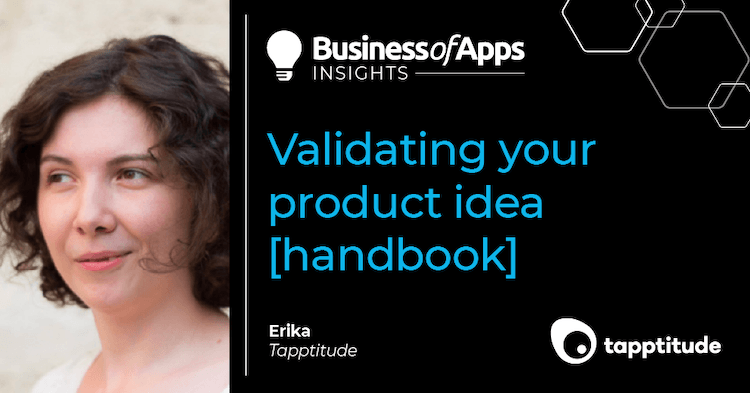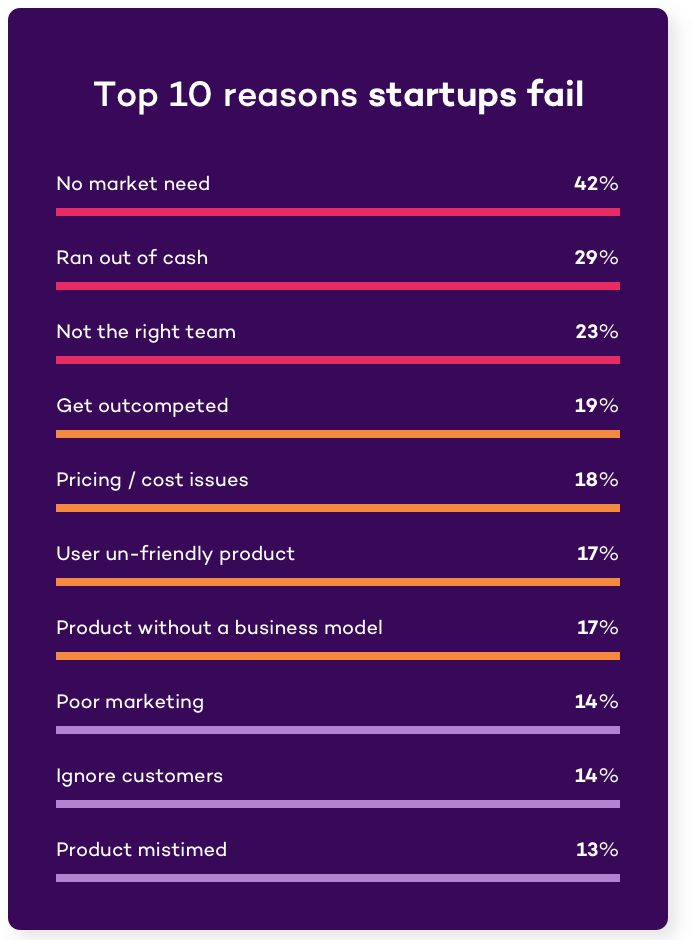
When you have a brilliant idea for a mobile product, it’s hard to contain your excitement. You’re tempted to jump into your problem-solving mode and start drafting user flows, define features, start coding right away. After all, the tech industry is defined by the speed with which it moves. Wanting to launch as quickly as possible is normal, especially when all the products you’re using have a new release out the door at least once a quarter.
But that’s not the whole story to a product’s success. If you rush to launch a product without validating it first, you could potentially make or break your entire business before you even get started.
You might think that a mobile product is validated over time, by its design, features and coding, but this is actually not true. What validates your product is the market and specifically, the people that are going to use your product.
Why product validation matters
Look, there’s no nice way of saying it, so I’ll just put it out here: the number one reason products fail is because there’s no market need. Look at the top 10 reasons CB Insights states are why startups fail, do some horizontal thinking, and you can see how users not seeing why your product exists may have something to do with a product dying a slow death in several years since launch.
Source: CB Insights
Product validation, or invalidation, is a crucial step in the mobile app development process, and one that should be taken at the very start of your journey. Before you start developing a mobile app, you want to make sure that people are going to use it.
The three most important reasons to focus on product validation when you start your development process include:
- Finding out whether the problem you’re trying to solve is a real one, and if it needs solving in the first place;
- Seeing how many people have that particular problem, and if they’re willing to pay for a solution;
- Saving time and money in the long run and having a chance to shift, regroup, and rethink your idea.
Validate your product with users
The first step in the product validation process is making sure there is a solid base of potential users out there for your mobile product. You don’t want to work on developing a mobile app that nobody is going to use. These are some of the steps to follow to validate your product with users:
- Identify the scale of your problem
- Focus on the user’s life experience
- Avoid confirmation bias
- Define your core audience
Validate your product with investors – early
Your audience is the first line of (in)validation, but you can also pursue conversations with investors. They are also a source of valuable feedback and possibly even early funding. These are the questions that you’ll be asking yourself during this part of the process:
- What kind of feedback should you expect from investors?
- How do you talk to investors so that they’ll listen?
- Should you care about getting funding at this stage?
How do you know when you’re done validating?
The thing about your product idea validation is that it’s a form of research. Any product manager worth their salt will tell you research work is never done. You just discover a new insight, add it to the mix to refine your product, and start researching some more.
In the context of (in)validating your product before you’ve even built it, how do you know when you’re done? You’ll want to figure out the following things:
- How do you draw insights from your talks?
- When can you be sure you have a core audience?
- What kind of feedback matters from investors?
Once you’ve got all of these things figured out, you can define your mobile product and start building it with a reliable team or product partner.
Download the Idea Validation Handbook for the road
To help you out in the process, our team at Tapptitude has launched the Handbook on Idea Validation to help you understand to guide you in the process of validating your product concept. We’re going to show you that even invalidating your product idea is good news, as it saves you time, money and energy you could have invested in a better idea.
If you want to read more, you can download the handbook in pdf format now, or, if you’re ready to start building your concept, you can reach out to us, and we’ll guide you through the whole journey.












